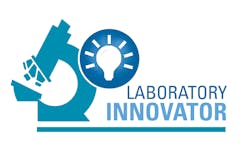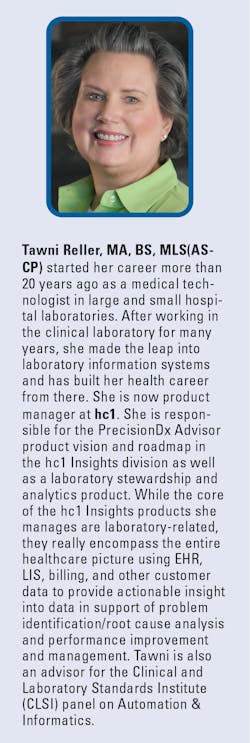Even in today’s digital age, many labs may still be utilizing manual processes (running reports from one or more systems, exporting data, consolidating and manipulating data in a spreadsheet, etc.) to document operational metrics, which is extremely inefficient, historical in nature (not real-time), and can lead to discrepancies.
Establishing data best practices creates efficiencies to help health system and hospital laboratory leaders tap into real-time insights and understand how staffing and volume intersect in order to ensure they are properly staffed for the types of testing that needs to be performed. In addition, an operations management solution allows users to track if they are meeting TAT benchmarks, determine if their test volume is level-loaded, and monitor by the hour how many tests are coming in and how many are completed. This can instantly create bandwidth by test and by department to ensure the correct departments are staffed at the correct times and at the correct levels.
Can a better data workflow in the clinical laboratory improve clinical quality?
Monitoring testing trends and gathering lab testing insights in real-time can help create efficiencies and improve care by uncovering where provider test ordering habits are not aligning with testing best practices. Research has shown that approximately 20% of all lab tests are considered unnecessary resulting in wasted resources (time and materials) and may also cause clutter or confusion in the patient’s medical record. Solutions that support ordering only the tests a patient truly needs to achieve a timely, accurate diagnosis and treatment plan ensures the right test is administered to the right patient every time.
In addition, it’s important to remember that each laboratory may have different needs. For health systems that have multiple laboratories or facilities using different LISs or EMRs, it’s important to make sure you are working with vendors that can quickly adapt and customize their solutions to your system, facility, or laboratory-specific needs. Having access to easy-to-read, near real-time dashboards and reports can enable you to see which providers are ordering tests outside of established guidelines. You can then use that information to tailor programs directed at the changes that will have the most impact for your health system and the patients within it.
Healthcare reimbursement models frequently change and it seems that laboratories are consistently reimbursed less for the testing they perform. How should laboratories be preparing for any changes in reimbursement — large or small?
Having a system in place that can quickly and efficiently break down historical and current lab-related information and report data accurately and consistently is imperative as changes impacting laboratories continue to occur. With technology tools in place to continuously analyze your operations using real-time lab testing insights, it’s easier to uncover where provider testing habits do not align with testing best practices. That information can help to reign in laboratory costs at any point in time by eliminating the scramble to obtain good data and reinforcing the use of data to support questions or influence change. With established data best practices utilizing a technology platform, laboratories can be better prepared to analyze and potentially offset reductions in reimbursement at any point in time.
What are some of the latest automation advances helping to improve laboratory efficiency?
Automation advances can mean many things: a specimen track, specimen cold storage, analyzer functionality in general, or accessing the data generated by automation/analyzers. Data-related advances tied to automation can be associated back to the LIS and translate to workflow efficiencies. Don’t assume that the analyzer integration that has been in place for years is still the best solution. Explore whether driver updates are available with analyzer manufacturers and analyzer middleware vendors, and work with your LIS specialists (or vendor) to determine if more data or fields are available for use with analytic-type reporting on your patient samples. Along with those vendors, the Clinical and Laboratory Standards Institute (CLSI) has documentation that supports interfacing and connectivity that is vetted by industry experts and reviewed on a regular basis to ensure the information provided is accurate in our fast-changing technology landscape.
What unique challenges are laboratorians currently being faced with?
For the decades that I have been involved with clinical laboratory work and services, the story has never changed: do more with less. I don’t believe there is a ‘unique’ challenge other than a variation on that theme. Labs are overwhelmed by supply and staffing shortages and are constantly looking for how to ‘do more with less.’ Lab stewardship programs can influence, from the front end (provider ordering), the amount of testing as well as appropriate testing for a patient and have proven to be effective when implemented and supported by the healthcare system. While data analysis is another specialized skill, it has proven to be a good way to reveal ways to reduce costs and/or increase efficiency of lab testing. An example is inappropriate test ordering behaviors that, once proven with data analysis, reduces lab (and patient) costs and improves patient care (reduces the ‘white noise’ of unnecessary lab results in the patient’s chart). Collaboration within the healthcare ecosystem is a key component of lab stewardship, and the lab has the ability (and the data!) to influence and drive change to ‘do more with less’ while positively impacting more than the lab.


